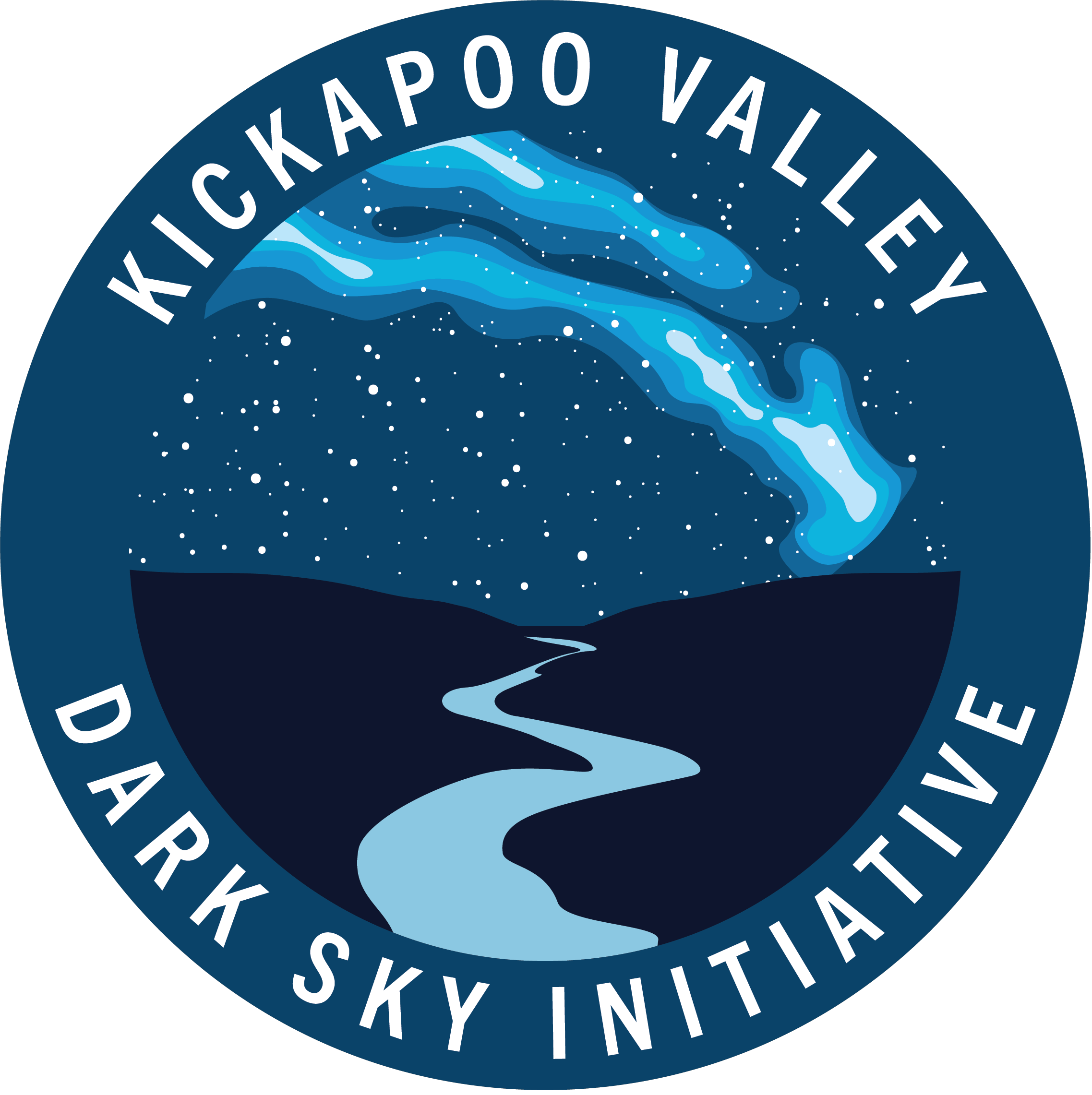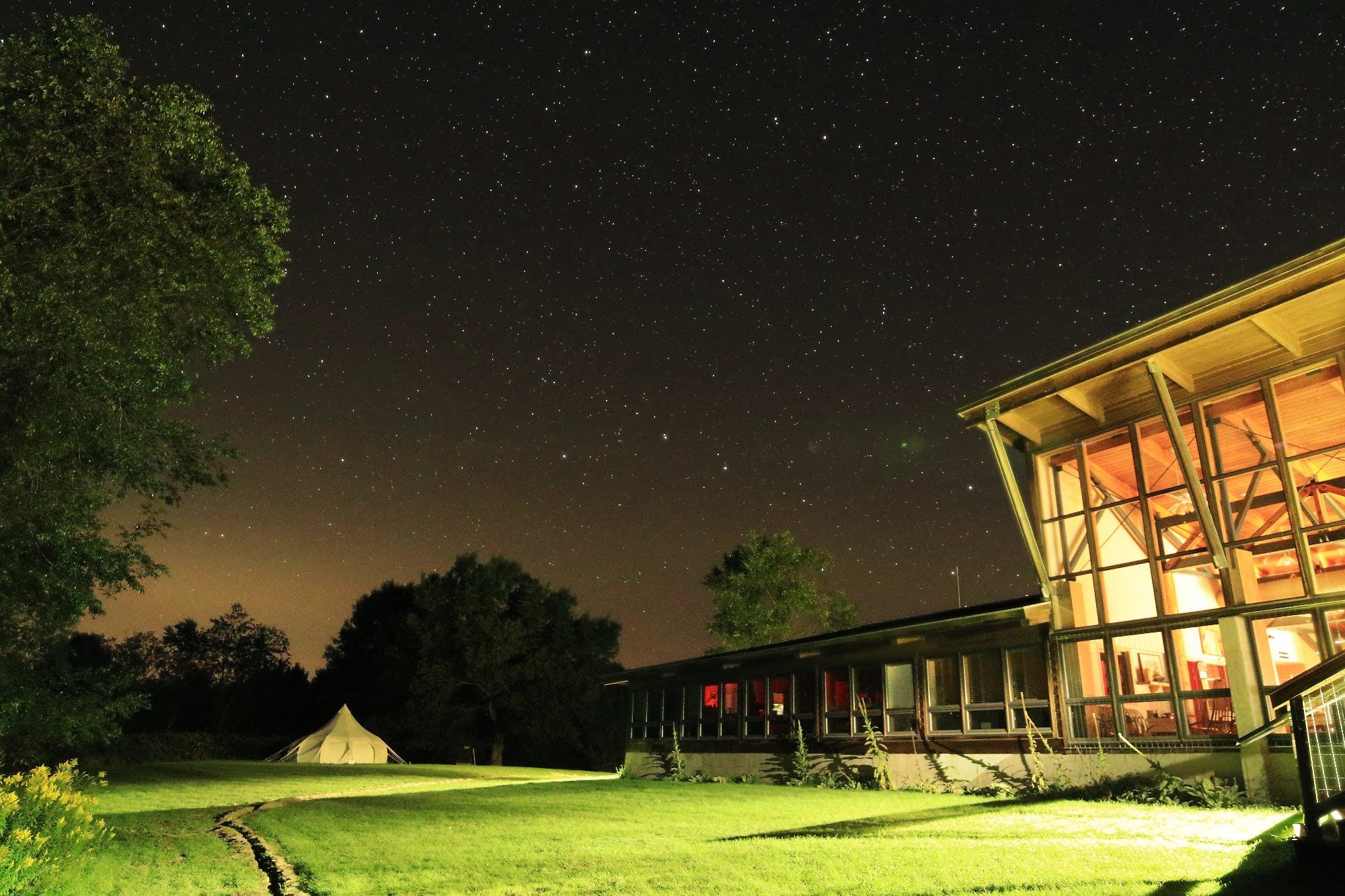Kickapoo Valley Dark Sky Initiative seeks recognition and designation from International Dark-Sky Association
The night sky. A truly amazing experience for anyone able to find a place to stargaze with limited to no light, man made of course, to spoil it. The Wisconsin Driftless area is a great place to view a beautiful star filled sky, but there is growing concern about those views being obscured by artificial light, or as it can be referred to, light pollution. There is no question though, as time progresses, so does the amount of artificial light being spewed into the night sky.
One organization, the International Dark-Sky Association (IDSA) is working to make enjoying the night sky with less light interference around the world possible. The IDSA is recognized as the authority on light pollution and the leading organization combating light pollution worldwide. According to their website darksky.org, their vision is for a night sky, filled with stars, is celebrated and protected around the world as a shared heritage benefitting all living things. Their purpose is to protect the night from light pollution, and their approach to accomplishing this, by providing leadership, tools, and resources for individuals, policymakers, and industry, they will reduce light pollution and promote responsible outdoor lighting that is beautiful, healthy, and functional. In addition, they will bring the issue of light pollution to diverse communities worldwide with the goal of creating access to information about the destructive impact of over-lighting and the benefits of responsible lighting.
Three organizations in the Wisconsin Driftless area, are working together to provide better night sky viewing conditions for the public. Wildcat Mountain State Park (WMSP), Kickapoo Valley Reserve (KVR), and Tunnelville Cliffs State Natural Area/Mississippi Valley Conservancy (TCSNA) are part of a collaborative effort called the Kickapoo Valley Dark Sky Initiative (KVDSI) that will seek to petition the IDSA to have the three properties recognized as International Dark Sky parks. All are located in Eastern Vernon County along the Kickapoo River. The KVDSI is headed up by a small group of volunteers, John Heasley, Marla Lind, Scott Lind, and Susan Cushing.
An earlier press release from KVDSI stated in part, that “The International Dark-Sky Association awards this distinction to ‘land possessing an exceptional or distinguished quality of starry nights and a nocturnal environment that is specifically protected for its scientific, natural, educational, cultural heritage, and/or public enjoyment’. The application process requires a sky quality survey, lighting inventory and management plan, community partners, and education and outreach. The release also pointed out that the benefits of creating the Kickapoo Valley Dark Sky Park include, a healthier community and ecosystem, the financial benefits of tourism, the pride of being a world-leading community, and financial savings owing to reduced energy usage. The release also acknowledged that the most important benefit is, “preserving our heritage of starry skies for the enjoyment and awe of future generations”. Their vision, “Stars Streaming Above River Flowing Below”.
“We're working together collaboratively to get designation for something called an International Dark Sky Park”, said John Heasley a volunteer with the KVDSI and an Astronomy Educator for Driftless Stargazing LLC on Facebook. Heasley said the people who decide that designation, is the IDSA. “So, they're the ones who decide, ‘you've just met the requirements to become one of 200 worldwide, dark sky parks’. We will be the second one in Wisconsin. There's already one in Door County. These are places that are working hard to preserve that nighttime environment and we've made that commitment to preserve that for people to enjoy right now, but also, to preserve it for future generations, as well.” Heasley said that the group checks in with each other via Zoom once a month to see that they are fulfilling all of The IDSA requirements. The process requires a sky quality survey, lighting inventory and management plan, community partners, and education and outreach to be fulfilled in order to meet those requirements.
The timeline for this recognition and designation? Well, Heasley said it is a long process. “It can take several years to achieve this designation because there's a lot of steps that need to be put into place. The main thing I would want to convey to people is, those dark skies already exist. Public Access already exists, the skies aren't going to get any darker after we achieve designation, but people can start enjoying those dark skies right now. Don't wait for the official designation. It's gonna happen. It's a slow process and you know, we're all being patient with that, but the dark skies are there right now for people to say wow, for people to enjoy. I think we all need public land where you can go and see these dark skies. Because there are dark skies, but many of them are on private land and people can't access them. We also have a lot of public programs this year, where people can come and meet with other people and have somebody point things out to them and learn things.”
The light that Heasley refers to that makes viewing and enjoying the dark skies difficult at times, has been called light pollution. Heasley though, put it this way, “I think a better description is using the term artificial light at night. Pretty much artificial light at night is any light created by humans. And certainly, you know, I'm not telling you anything, that's really been increasing in the last couple of decades. We've been living with that for over a century now and it's not going away. I mean, we're not going back to the 19th century and no artificial light at night. But there's a real push to ask people to think about, to consider, how we use light at night. We all want to be safe at night. And so, we need light to light up our sidewalks so we can see where we're going at night. And we need light while we're driving around at night because we’ve got automobiles. But to ask people to think about every piece of lighting. What is its purpose? Is it serving a useful purpose? So, think about the light we use. Think about how we use the lighting. The idea is, if you want light on the sidewalk, put the light on the sidewalk, but there's no reason for the light to be shining in people's eyes. There's no reason for the light to be shining in people's windows. And certainly, we don't want the light going up, because that's all just wasteful. In my mind, that's all deeply disrespectful to the to the nighttime sky and the people trying to enjoy that”. Heasley said that is where the IDSA comes in. “If people go to that website, they can learn all kinds of stuff about the effects of artificial light at night and simple things we can do to reduce it. The idea is, we want people safe at night. We just want people using the light we need, but not the light that we don't.”
Heasley pointed out that WMSP over the past two years has made progress in their light usage. “They have really improved their lighting. We did a lighting inventory. They looked at their lights saying ‘yeah, we need this one, we don't need this one. This light we can make better if we pointed down instead of out. We can shield this light. We can look at the temperature of the light and we can use more amber light instead of blue light or instead of shining a light up at the flag on the flagpole, we can put a light at the top of the flagpole and shine down’. Also, the park has designated areas on their map for stargazing. So, all these things serve as an example for other state parks. Here are simple things you can do to improve the nighttime, the evening experience for visitors to your park. I just love that WMSP is kind of a poster child for good lighting.”
He shared that WMSP, KVR, and the TCSNA all have optimal stargazing locations on their individual maps that Heasley said the group worked diligently to define.
Heasley said it is important to not only make available to adults clear dark skies to view the wonderous stars, but to expose younger generations to that same experience. “Every child should have that experience of standing under a starry sky and being able to just say, ‘wow’. Most kids growing up today, don't have that experience. They live in places where they can no longer see the stars and they don't know what they're missing because they’ve never seen it. I had that experience as a child. I grew up in Philadelphia. Back in the 60s and 70s, it was hard to see the stars there, but the Boy Scouts took me to the Pine Barrens of New Jersey as a 10-year-old. I was just wowed by the stars. That’s going back 50 some years. It's changed a lot since then. So, these are places where kids can be just wowed by the stars and I just think that should be the birthright of every child. They should be able to see the rest of the solar system, the galaxy, the rest of the of the universe. It teaches us humility. It teaches us deep time. It fills us with gratitude, which I think is so important.”
Heasley said the group is eager to finish up meeting the requirements of the IDSA to receive designation and recognition, while stressing it is a lot of work that’s being done mostly by a group of volunteers. “We want to finish up this part of the project so we can get back to putting our full energies into sharing the stars and doing interviews like this. But more importantly, just doing public programs,” Heasley said smiling.










